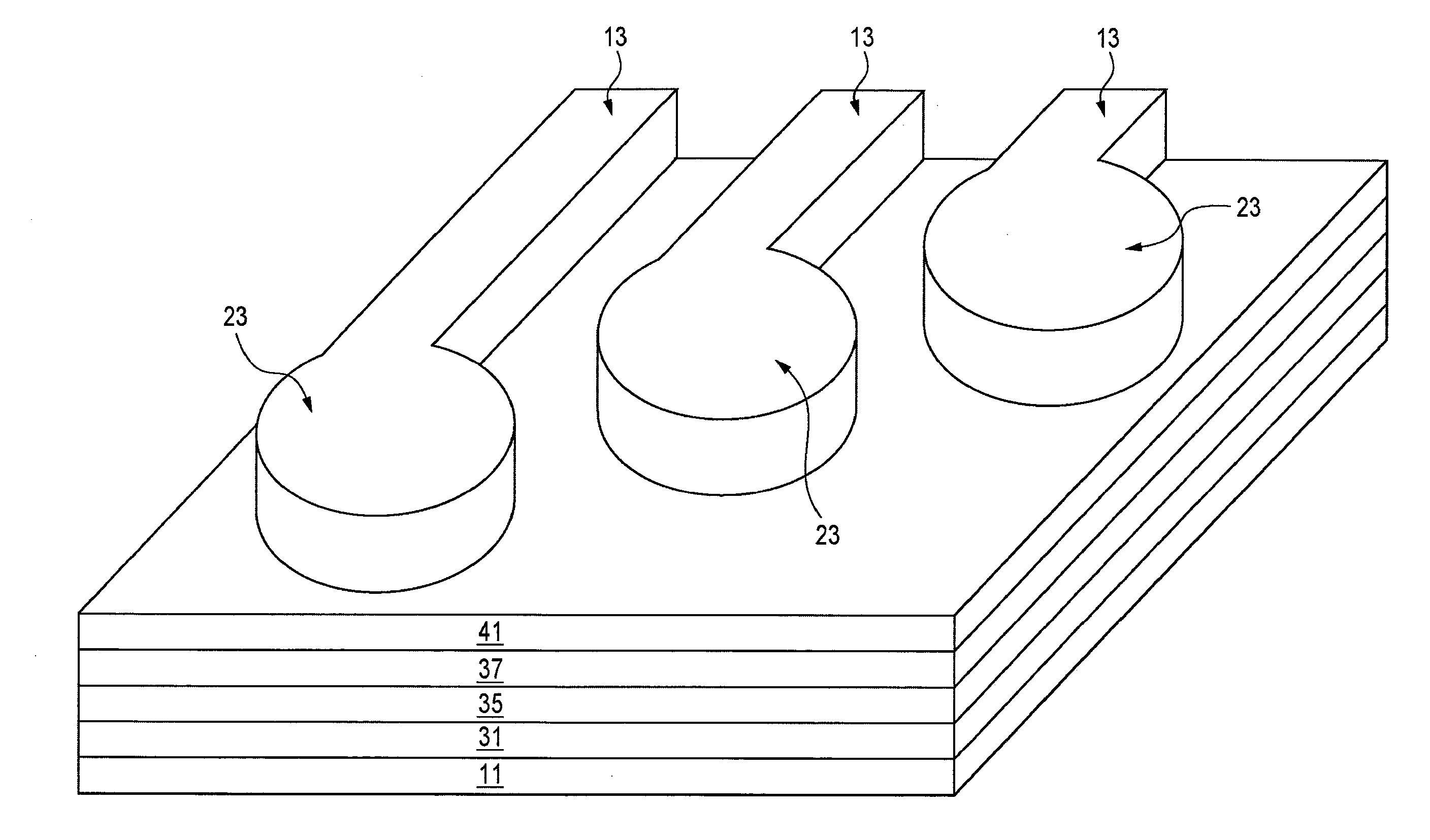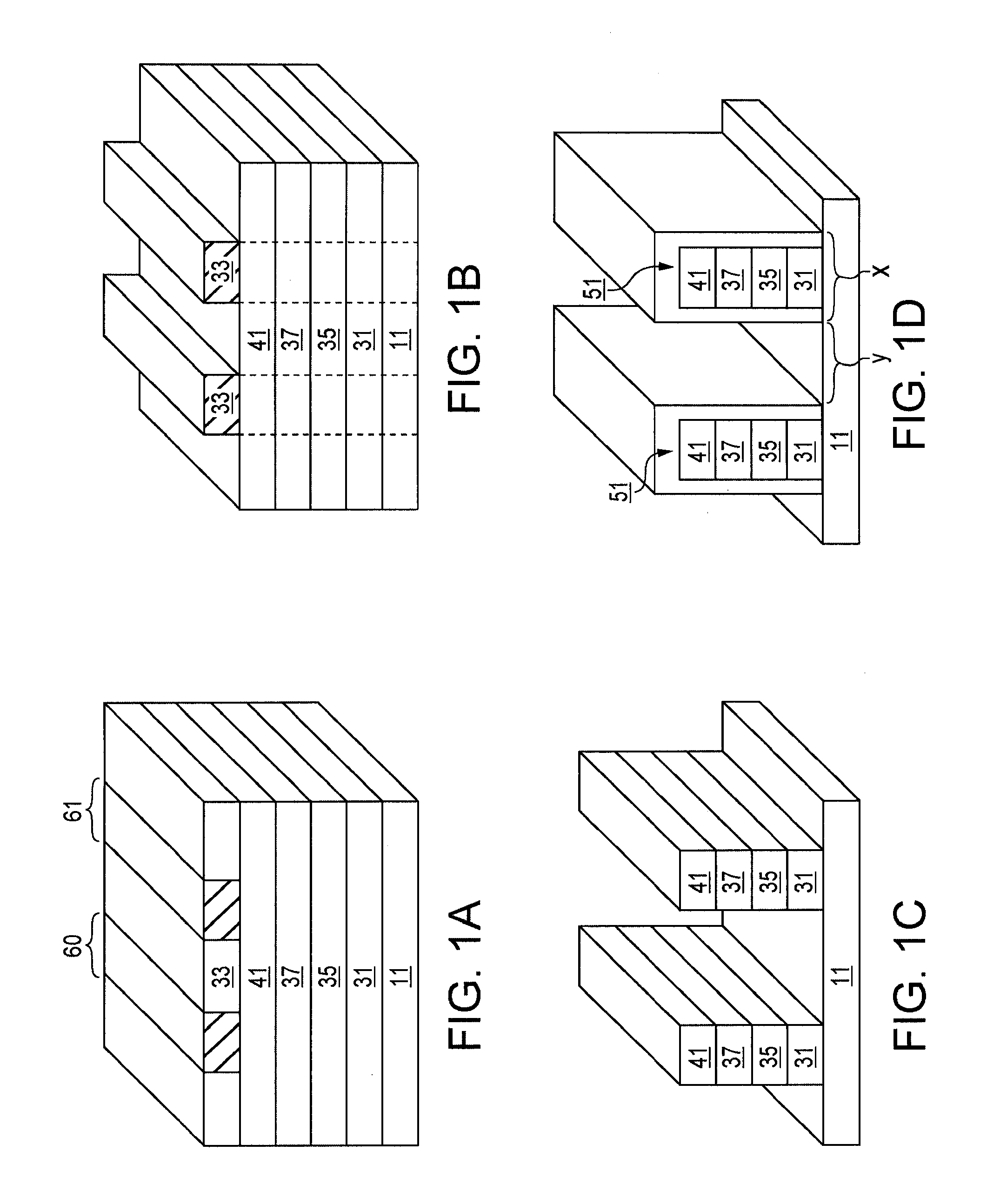Method for providing electrical connections to spaced conductive lines
a technology of electrical connections and conductive lines, applied in the direction of electrical apparatus, semiconductor devices, semiconductor/solid-state device details, etc., can solve the problems of inability to reliably form line features, limit the ability to make electrical connections to a particular line without such known photolithographic techniques, and the inability to accurately patterned lines
- Summary
- Abstract
- Description
- Claims
- Application Information
AI Technical Summary
Benefits of technology
Problems solved by technology
Method used
Image
Examples
Embodiment Construction
[0030]Embodiments described herein address the problems with current techniques for making electrical connections to closely spaced conductive lines, e.g. parallel lines with spacing of less than 45 nm in width, and provide electrical connections to such closely spaced conductive lines. The embodiments described herein can also be used to make electrical connections to any spaced conductive lines including those formed using conventional photolithographic techniques.
[0031]It should be understood that embodiments of the invention are not limited by the example embodiments described herein and that changes can be made thereto. The embodiments described herein can be applied to any integrated circuit that has spaced lines, and is particularly suitable for making connections to parallel conductive lines including closely spaced parallel conductive lines, for example, parallel conductive lines having a spacing of 45 nm or less between them, and more particularly to such conductive lines ...
PUM
 Login to View More
Login to View More Abstract
Description
Claims
Application Information
 Login to View More
Login to View More - R&D
- Intellectual Property
- Life Sciences
- Materials
- Tech Scout
- Unparalleled Data Quality
- Higher Quality Content
- 60% Fewer Hallucinations
Browse by: Latest US Patents, China's latest patents, Technical Efficacy Thesaurus, Application Domain, Technology Topic, Popular Technical Reports.
© 2025 PatSnap. All rights reserved.Legal|Privacy policy|Modern Slavery Act Transparency Statement|Sitemap|About US| Contact US: help@patsnap.com



